The E.P. Carrillo Capa de Sol cigar and wine pairing
Posted by Francois Pistorius on 25th Aug 2022
The E.P. Carrillo Capa de Sol cigar and wine pairing
The cigar release immediate hints of cocoa and coffee. The profile is classic for a big gauge cigar, and the flavours are subtle. The E.P. Carrillo Capa de Sol is an Elite cigar by Ernesto Perez-Carrillo that debuted in 2016. "Capa de Sol" translates to "wrapper of the sun". The cigar has an Ecuadorian Sun Grown wrapper.
Capa de Sol was one of the new blends introduced.
Today we look at the E.P. Carrillo Capa de Sol in the Sultan with a big sixty gauge size. Overall, I found this impressive Maduro, a very smooth cigar from E.P. Carrillo. The Cape del sol forms part of the E.P. Carrillo's more premium cigars. Although, I rate all the EPC cigars as premium.

EPC Elite series details
Ernesto spends hours on tobacco farms and fields looking for the perfect leaf. Then he invests many hours on the factory floor blending tobacco to create the perfect cigar. That is how Ernesto Perez-Carrillo created the Elite Series. The Elite series cigars consist of unique tobaccos and blends. The series is a master achievement full of flavour and character.
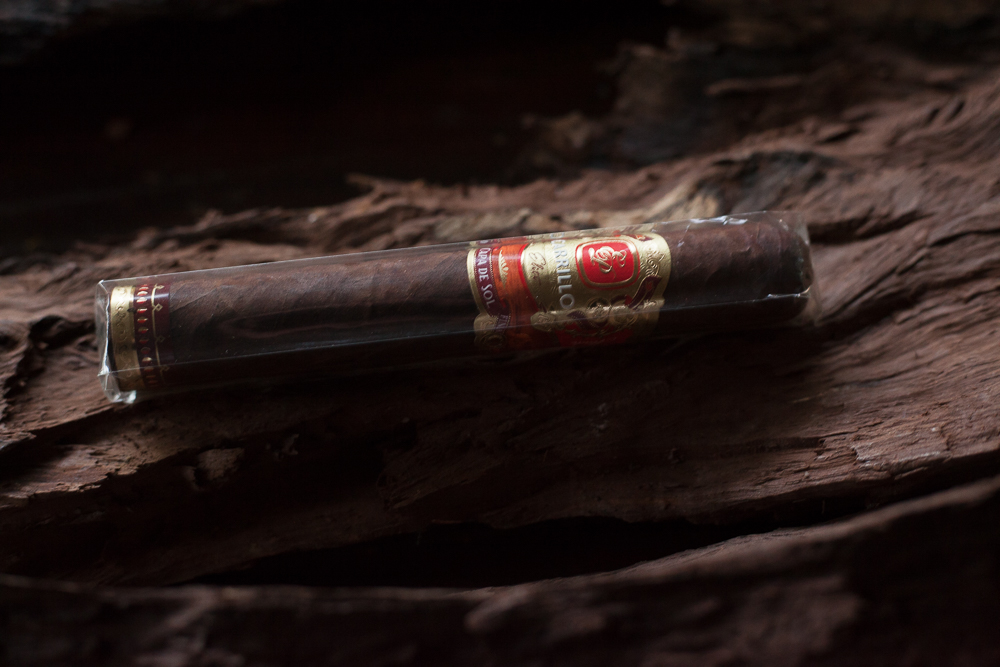
The E.P. Carrillo Capa de Sol Sultan Blend Profile
Gauge 60
Size (mm) 152
Filler Nicaragua
Binder Nicaragua
Wrapper Color Colorado
Wrapper Ecuadorian Sun Grown
Country of Origin Dominican Republic (Tabacalera La Alianza)
If you read last week's post about the New Wave EPC Robusto cigar, this post's history story about Ernesto-Perez Carillo is similar.
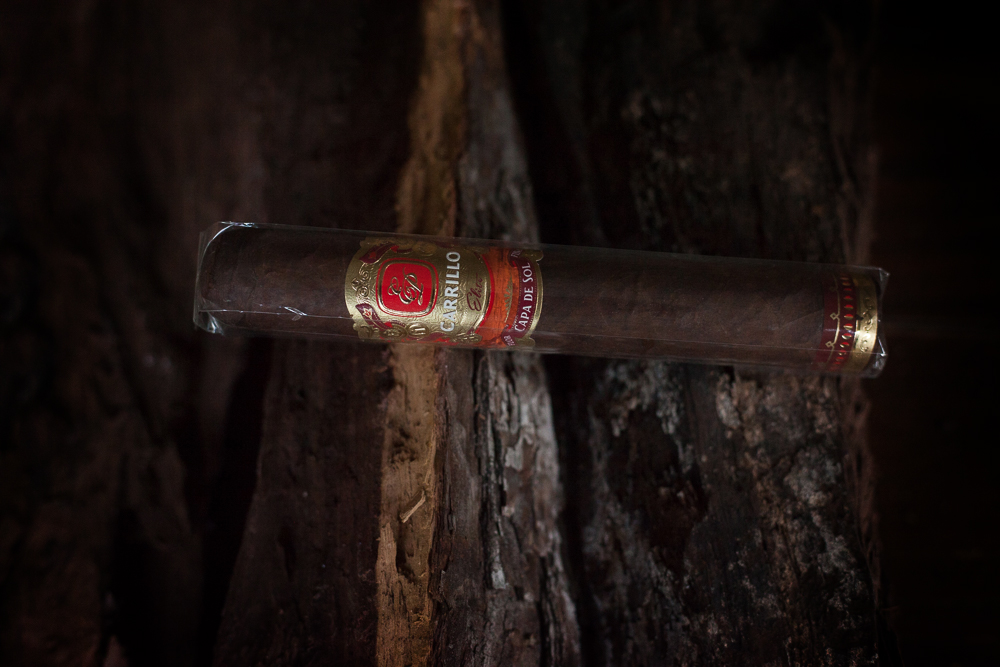
The Early Years
The roots of the Perez-Carrillo family are in Cuba. Ernesto Sr. was born in 1904. He began learning about tobacco and cigars from his father, who rolled and sold penny cigars in the streets of Havana.
The Perez-Carrillo family became well-respected in Cuba. After working as a tobacco buyer for many years, Ernesto Sr. launched the family cigar business in 1948. He purchased El Credito, a small cigar factory in Havana. Ernesto Sr. served in the Cuban Senate in 1954 and 1958.
Havoc during the Cuban Revolution
But, as the Cuban Revolution started and Castro took control of Cuba, the Perez-Carrillo family's life changed forever. The Cuban authorities arrested Ernesto Sr. several times for his political beliefs. The government confiscated the family's properties, including the El Credito factory.
Fearing for their safety, the family fled to Miami. But Cuba did leave a lasting impression on Ernesto Perez-Carrillo.
"I remember when Castro came into Havana. I looked up in the sky and saw warplanes. Tanks were in the streets. It was a wild scene. I was only six at the time. I didn't think it was the end of the world, but there was a sense of insecurity." Ernesto Perez-Carrillo
The Master Blender and cigar maker wanted to move his family back to Cuba. It became clear that returning to Cuba was not going to happen. Ernesto Sr. focused on making Miami his home. He concentrated on his Cuban cigar talents to earn money.
He made cigars in Miami.
Nine years passed. Ernesto Sr. finally purchased a cigar factory in Little Havana, naming it El Credito.
Ernesto Perez-Carrillo had a passion for jazz, not cigars. Hustling from gig to gig. Ernesto showed determination to make it as a drummer. He dreamed of being a jazz drummer. At 25, he moved to New York City to try his luck. After failing to catch the attention of Stan Getz, he decided to return to Miami. It was the start of his journey as a cigar producer.
Ernesto and his father made cigars for the locals in Little Havana. In 1976 young Ernesto convinced his father not to sell El Credito. He shadowed his father learning to create cigars.
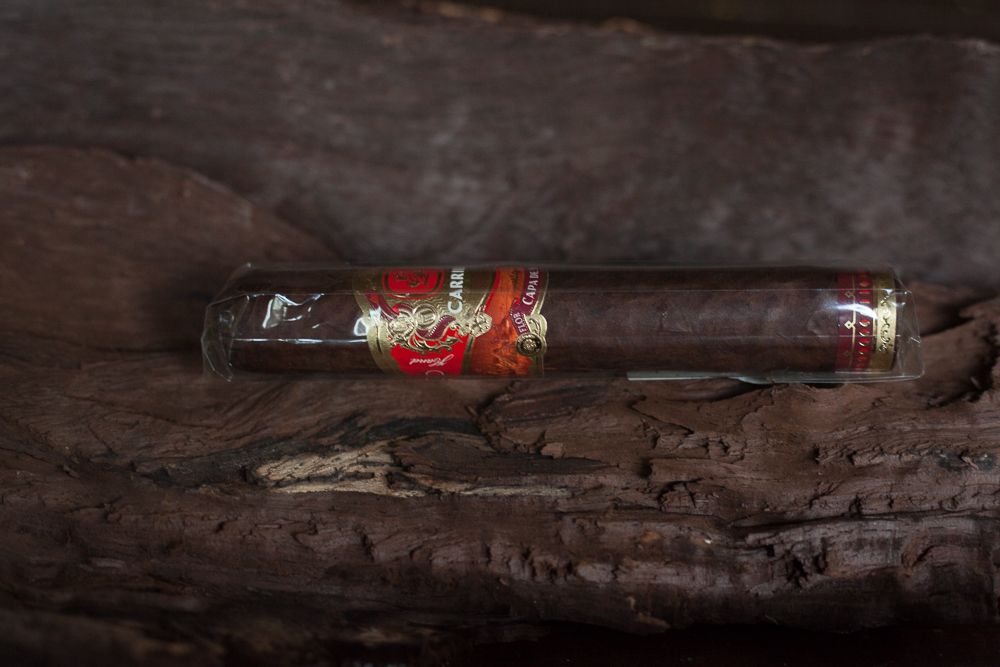
Ernesto Perez-Carrillo taking over the Business
His father passed away in 1980. At 29, Ernesto took over the reins of El Credito. Many financial difficulties followed. Bills piled up.
Demand for cigars at the time slumped. Ernesto's friends in the Miami cigar trade carried him through the tough times. They had confidence that his craft would succeed. And it did.
Today, Ernesto credits his father for teaching him all about cigars. He grew up in Cuba's prime growing region, the Vuelta Abajo. In Cuba, Ernesto began to appreciate the art of growing tobacco.
The most valuable lessons Ernesto learned:
- Dedication to work,
- Humility,
- Patience and respect.
These principles are behind each cigar created by Master Blender Ernesto Perez-Carrillo.

The Birth of E.P. Carrillo
After years of slow sales, Ernesto created a cigar that excited everyone. He made La Gloria Cubana. This overnight success was years in the making.
La Gloria Cubana achieved star status among Miami cigar smokers.
It all changed in 1992. The Miami-made cigar outperformed established brands and its Cuban competitors. Four of the brand's nine cigars scored 90 or higher in the new Cigar Aficionado publication.
The La Gloria Cubana brand achieved fame in cigar circles during the early 1990s. The boutique brand went from selling a few thousand cigars to millions. The demand for the cigar far outstripped supply.
The sale of El Credito
Then in 1999, Swedish Match purchased El Credito from the Perez-Carrillo family.
Ernesto's returned to the tobacco fields after working for Swedish Match /General Cigar until March 2009. It was time to create the next great cigar.
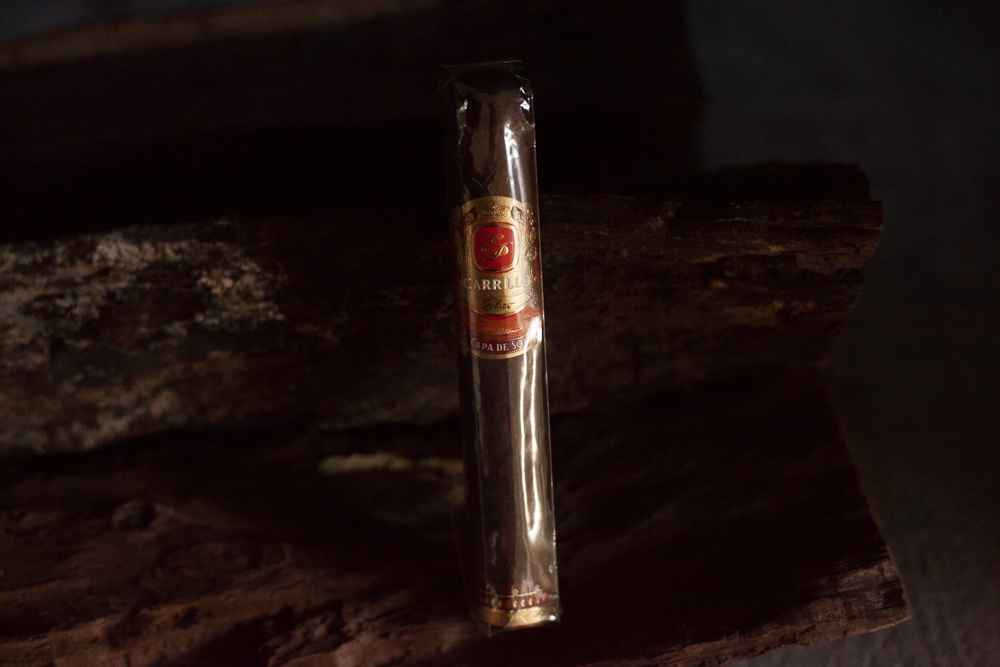
The Start of E.P. Carrillo
Ernesto dedicated himself to perfecting a family-run boutique brand. His son, Ernesto III and daughter, Lissette, joined him. Since the brand launch, the family has released several new blends.
Each combination offers a different complexity and strength. A cigar profile true to the family's ideals.
- Consistency,
- Tradition,
- Passion for perfection.
Today, E.P. Carrillo is a worldwide celebrated cigar brand.
"I smoke because I want to feel not just the senses around the palate but the whole body. When I tasted a Cuban Davidoff cigar in 1982, that's what I felt. And that experience is what I try to replicate in my cigars – a total sensuous smoke." Ernesto Perez-Carrillo
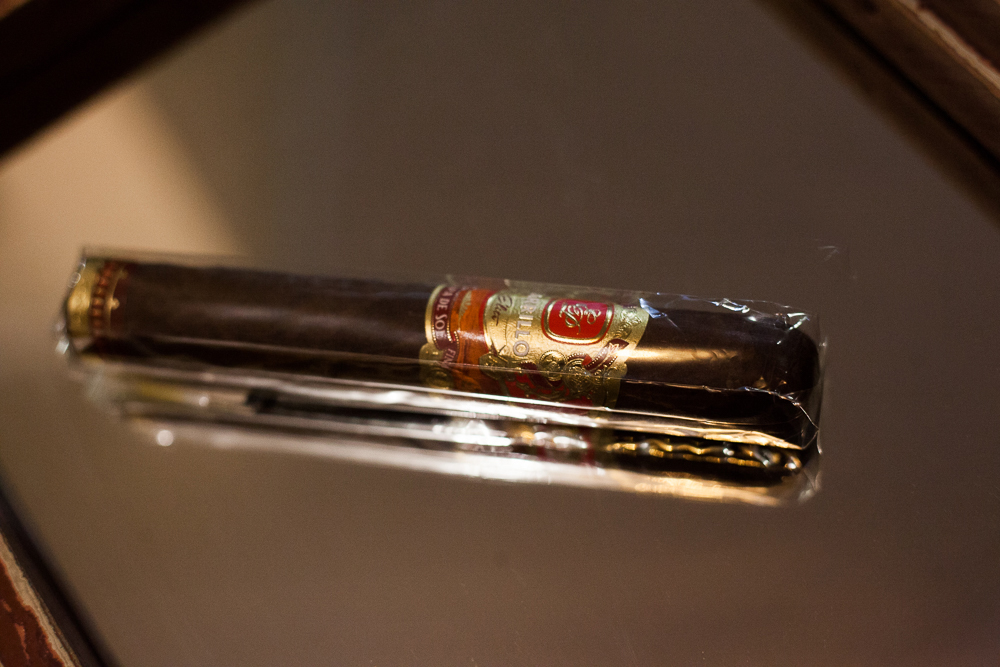
E.P. CARRILLO Worldwide
Dominican Republic | Nicaragua | Ecuador | Cuba
Dominican Republic
The primary tobacco-growing region in the Dominican Republic is the lush Cibao Valley. Many experts feel it has only one rival, Cuba's Vuelta Abajo region.
The Cibao mountain ranges surround the valley and Cibao river. It is an ideal setting for growing premium tobacco.
The soil is rich and deep. Afternoon breezes cool the air. Throughout the Dominican Republic, master blenders work with various premium tobaccos.
Ernesto Perez-Carrillo has deep roots in the Dominican Republic. His La Gloria Cubana cigar skyrocketed in the 1990s. That lead to Ernesto needing more tobacco.
At one point, La Gloria Cubana's Torpedo was on backorder for 12 months. He selected a site in Santiago, Dominican Republic, as his second factory.
Ernesto chose the Dominican for the E.P. Carrillo factory. In April 2009, he signed a lease on a 40,000-square-foot building in Santiago's Zona Franca. Work started to create a dream factory named Tabacalera La Alianza.
At the Dominican factory:
- Tobacco ferments,
- Tobacco Ages
- Rollers make handmade cigars under the supervision of Ernesto.
All rollers roll the Cuban way. The rollers roll the cigars in a triple-cap method.
The desire to understand the intricacies of tobaccos worldwide drives Ernesto Perez-Carrillo's achievements.
"Each tobacco has its character. You have to treat each tobacco differently and understand how they work together," Ernesto Perez-Carrillo.
Nicaragua
Nicaragua's tobacco reputation results from the remarkable climate and soil.
There are three main tobacco-growing areas.
Esteli,
Condega,
And Jalapa.
Esteli and Condega are home to the majority of cigar production in Nicaragua. The towns are close to the Honduran border.
The towns boast lush fields of Cuban-seed tobacco. Esteli's black soil produces a full-flavoured dark leaf. It is a rich leaf with full aromas, body and flavour.
Condega's tobacco is sun-grown and used for filler and binders. Each plays an integral role in the formation of Ernesto's unique blends.
Northeast of Esteli and Condega lies the Jalapa Valley. It is a remote valley in Nicaragua with exceptional tobacco.
The naturally-occurring minerals in the soil give the tobacco an earthy-sweet flavour.
Ecuador
The cigar industry scrambled to find wrapper alternatives to Cuban tobacco during the 1960s. All due to the U.S. trade embargo with Cuba in the 1960s. Ernesto Perez-Carrillo found the alternative in Ecuador.
Due to more than 30 active volcanoes, Ecuador's ashy eruptions benefit tobacco. The volcanic ash helps create fertile soil, ripe for growing a premium tobacco leaf.
Many call Ecuador's tobacco "cloud grown" instead of "shade grown." due to the constant cloud cover. The natural protection from the sun creates a thin but firm tobacco leaf. It is a flavourful and natural coloured leaf.
Ernesto's Cuban roots and knowledge allowed him to find the leaves and tobacco to create his master blends. And, of course, premium cigars.
Let's move to the cigar and wine pairing. The story is a round trip. From the rich soils of the Dominican to the soils of Alsace and the Cape Winelands.
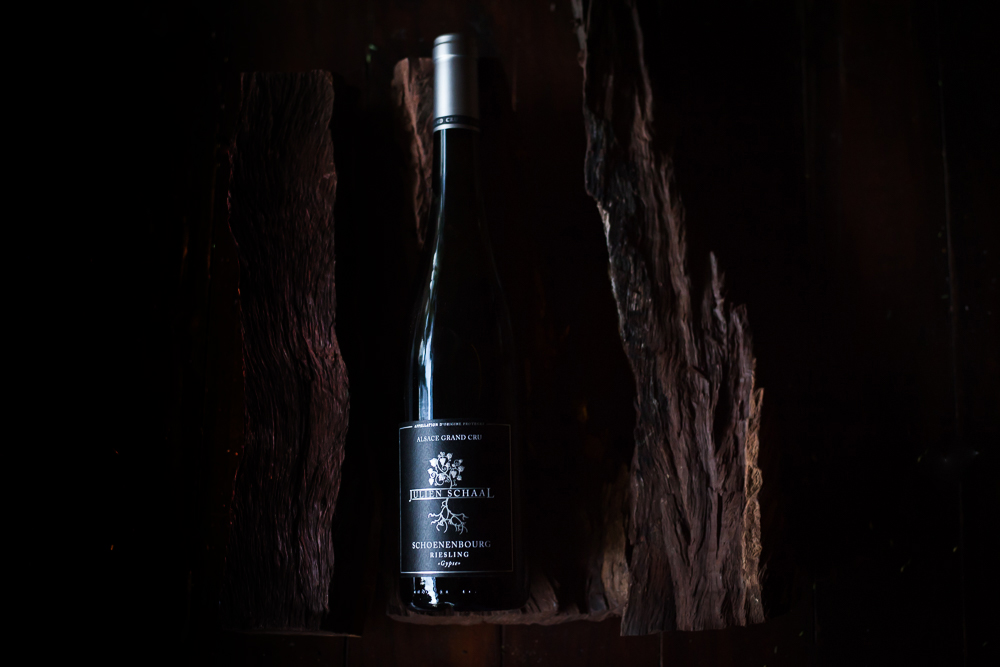
Julien Schaal Alsace Wines
Julien Schaal Alsace Grand Cru Riesling
Alsace wine region has a unique combination of excellent soil types. The area has a natural mix of 'geologies.
You will find pink sandstone, blueschist, limestone, granite, gypsum, and volcanic rocks. Grand cru vineyards have a piece of all these exciting soils.
Julien chose a Riesling to translate the unique soil characters into wines.
In 2011, Olivier Biecher and Julien launched the winery exclusively dedicated to Alsace Grands Crus wines. From Andlau to Thann, they found several intriguing vineyards with strong individual characters.
It is a cellar dedicated to Grands Crus wines.
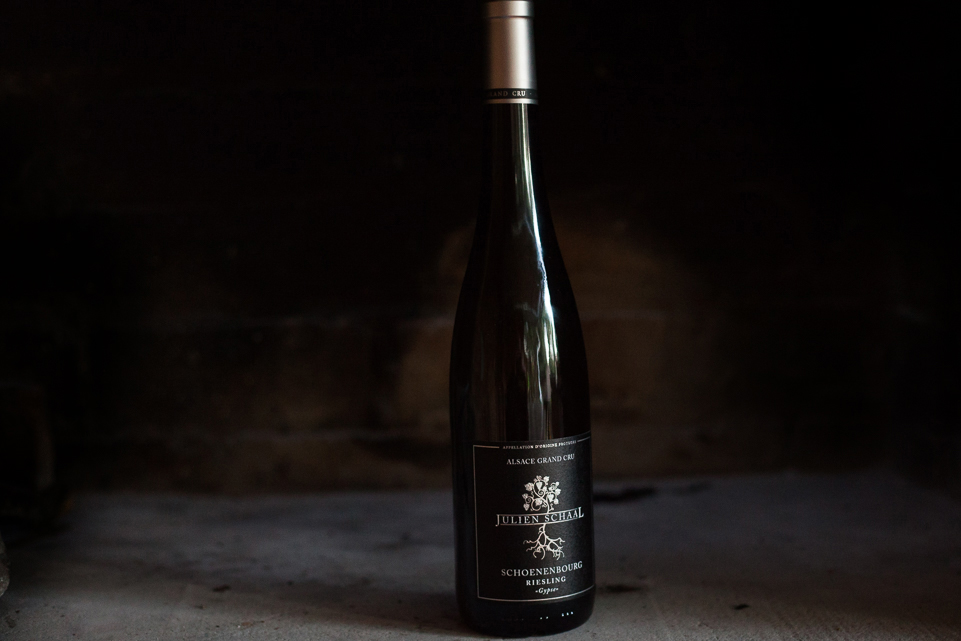
Julien Schaal Cellar
The wine cellar is in the village of Saint-Hippolyte. The village is at the Vosges mountains' foothills below the Haut-Koenigsbourg castle.
Julien and Sophie pick all grapes by hand. The grapes are carefully sorted and then go to the pneumatic press. A long 12-hour pressing is necessary to extract the best juice possible.
After decantation, the juice starts a long alcoholic wild yeast fermentation that can take up to 4 months.
They add no sulphur before the following spring allowing the wine to open up as much as possible. The result is an aromatic and subtle but complex wine.
Julien Schaal South African Wines
The African wine dream
A winemaking dream in the Winelands of South Africa.
Julien started making wine in Alsace. He fell in love with South Africa while working the 2003 harvest in Hermanus.
The following year he convinced Gordon Newton Johnson, owner of the Newton Johnson vineyards in the Hemel-en Aarde Valley, to start a new venture.
Humble beginning and scraping together every rand led to the first vintage in 2005, which consisted of a few Chardonnay and Syrah barrels.
Sophie is a graduate of the winemaking school in Burgundy. In 2013 Sophie joined Julien. Today they spend time making Riesling Grand Cru in Alsace in October and the cool-climate South African Chardonnay in February.
South Africa - Cool-climates
In 2003 Julien fell in love with the huge potential of Chardonnay in South Africa. The cool climate regions in the Overberg, Walker Bay, Elgin and the Hemel-en-Aarde Valley offer the perfect Chardonnay vineyards.
Olivier works with grapes from each vineyard to find blocks representing the wine area's characteristics.
Elgin is the Cape's coolest viticultural area and has a unique climate, similar but slightly cooler than Walker Bay.
In the Hemel-en-Aarde Valley, the soil is mostly Malmesbury Shale. The valley has surrounding mountains. The Galpin Peak at 810 metres and the 1200 metre Tower of Babel traps the cloud cover and moisture from the cooling sea breezes. The result is a long, slow growing-season yielding fully-ripe, flavour-rich grapes.
The Cold Atlantic Ocean influences Walker Bay's climate, making it one of the coolest vine-growing areas in the Cape. Summer in the Walker bay area is warm, with mild and frost-free winters.
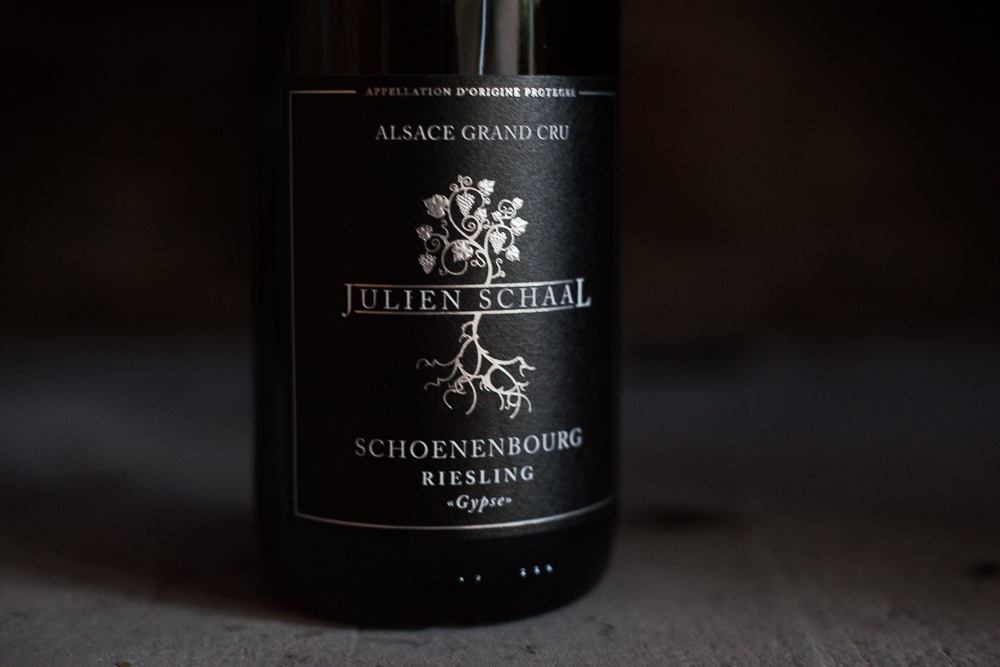
Simple Winemaking Philosophy
Hand-picking
Hand-picked grapes t the coolest time of the day, then stored overnight in a cooling room.
Whole-bunch pressing
Protect the fruit at every stage.
Natural settling
Following a long and soft pressing, the juice transfers to tanks for gentle static settling.
Long ageing
The slow, cool, barrel-fermentations can last up to three months, followed by a minimum of ten months in barrel.
Gentle bottling
Bottling happens in the cellars on a low-speed line without fining or heavy filtration.
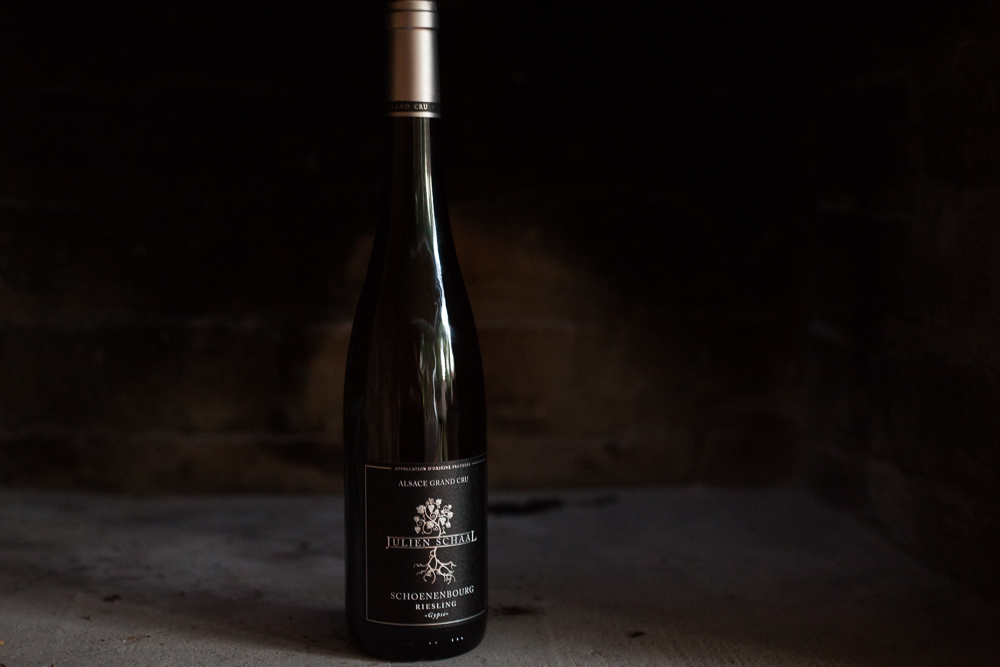
SCHOENENBOURG "Riesling" AOC ALSACE GRAND CRU "Gypsum"
"The Magnificent Hill"
Schoenenbourg is among the most celebrated of Alsace's Grands Crus vineyards. The area has vines that produce "the most noble wine of the country". Traces of the area wines date back to the 16th century. Even the philosopher Voltaire owned several vineyards in the Grand Cru.
The Gypsum soils produce rich and smokey Rieslings with hints of honey. The palate has medium sweet fruit blended with light acidity and minerality.
Variety
Riesling
Soil
A water-retaining subsoil of Keuper, marl, dolomite and gypsum, overlaid with fine layers of quaternary siliceous gravel.
Vineyard
Situated to the north of Riquewihr, the vineyard runs along the steep south and southeast flanks of the Schœnenbourg hillside.
Vineyard altitude of 265 to 380 metres.
Schoenenbourg history
Wines from the Schoenenbourg area gained fame in the early Middle Ages. Scoenenbourg Grand Cru wines age well and develop complex, rich aromas.
Wine Tastes
The wine has a herby nose with sweet, lime-edged fruit. Each sip leaves medium sweet tastes with light acidity and balanced minerality on your palate. There's some smoky depth and hints of honey.
Ageing Potential 10-20 years
Wine and Food
Fish
Light meats
Comté cheese
Refined Chèvre cheese
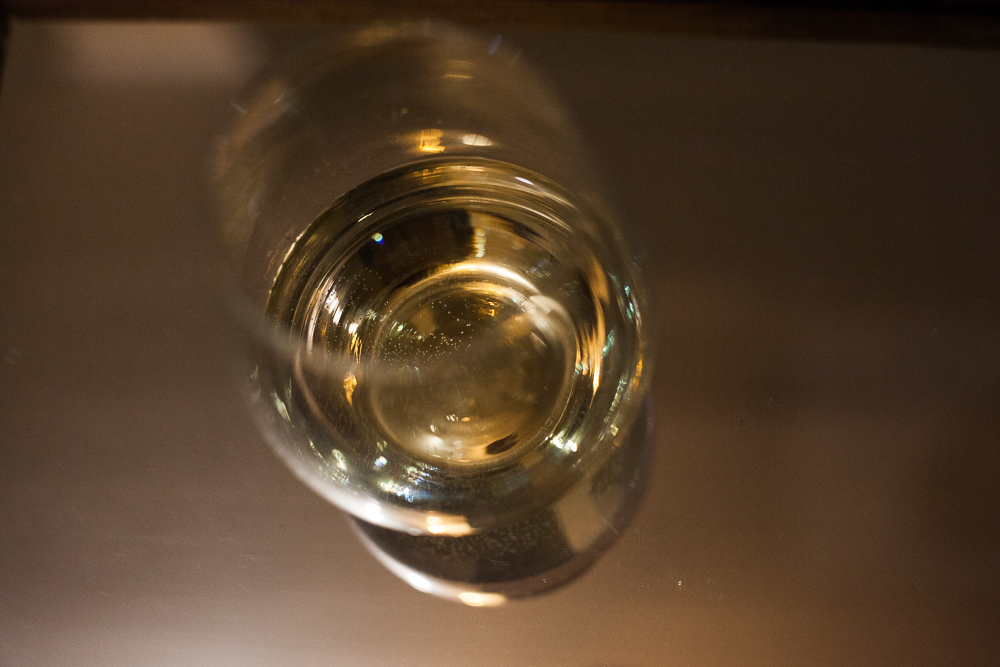
Julien Schaal Alsace Grand Cru Riesling Wine
Light
Steely
The light-coloured wine shows hints of yellow in the glass.
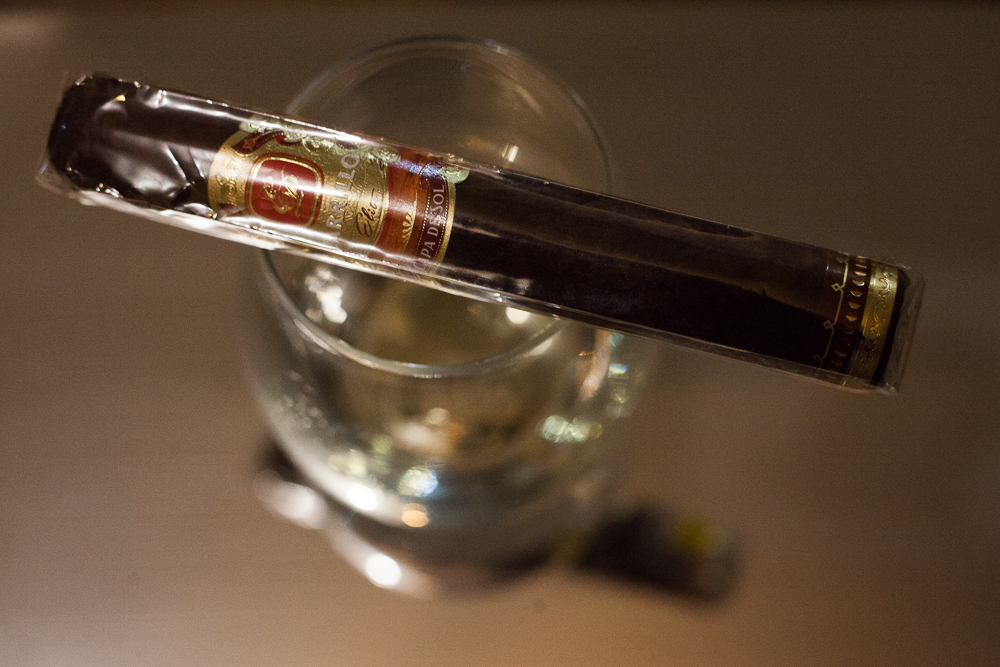
Julien Schaal Alsace Grand Cru Riesling Scents
Figs
Lime
Steely
Sweet dates
Light hints of fruit
Green crisp apples
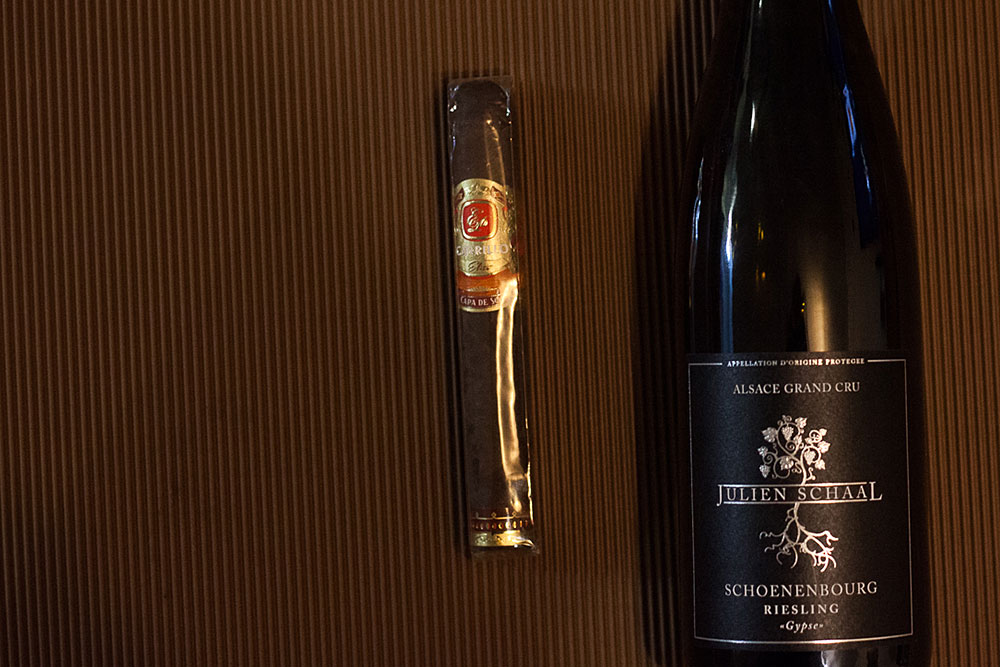
Julien Schaal Alsace Grand Cru Riesling Taste
Fruit
Green apple
Dates and figs
Crisp, smooth summer wine
The wine drinks smooth and crips with balanced alcohol and low acidity. It is an easy-drinking white wine with a subtle character.
Lingering sweetness
Fresh, crisp, and sweet mouthfeel
The wine is steely, typical of a Riesling. There are hints of salt blended with fruit and light sweetness. But no flavour or taste is overpowering.
To view more of the small batch wine range, visit Julien Schaal's website.

The E.P. Carrillo Capa de Sol Sultan Cigar
The E.P. Carrillo Capa de Sol Sultan's Ecuadorian wrapper had a medium brown colour with a red tint. The cigar is smooth looking with a few leaf veins visible.
Cigar Band
A stately red with gold band wraps the cigar.
The band visuals represent the sunny Dominican climate.

The E.P. Carrillo Capa de Sol Sultan Cigar Dry Aroma
Spice
Cured meat
Aged cheese
Floral tobacco

The E.P. Carrillo Capa de Sol Sultan Cigar Dry Draw
The cigar has a light, airy draw for a big gauge cigar
Tastes of mild coffee and cocoa emerge.
The aged tobacco delivers a smooth draw full of flavour.
Before lighting up the E.P. Carrillo Capa De Sol Sultan, I used a V cut to slice the cap. The dry draw delivered a classic cigar profile. The cigar has everything from light coffee, cocoa and hints of smokey barnyard scents. The pre-light draw is surprisingly light for a big gauge Maduro cigar.
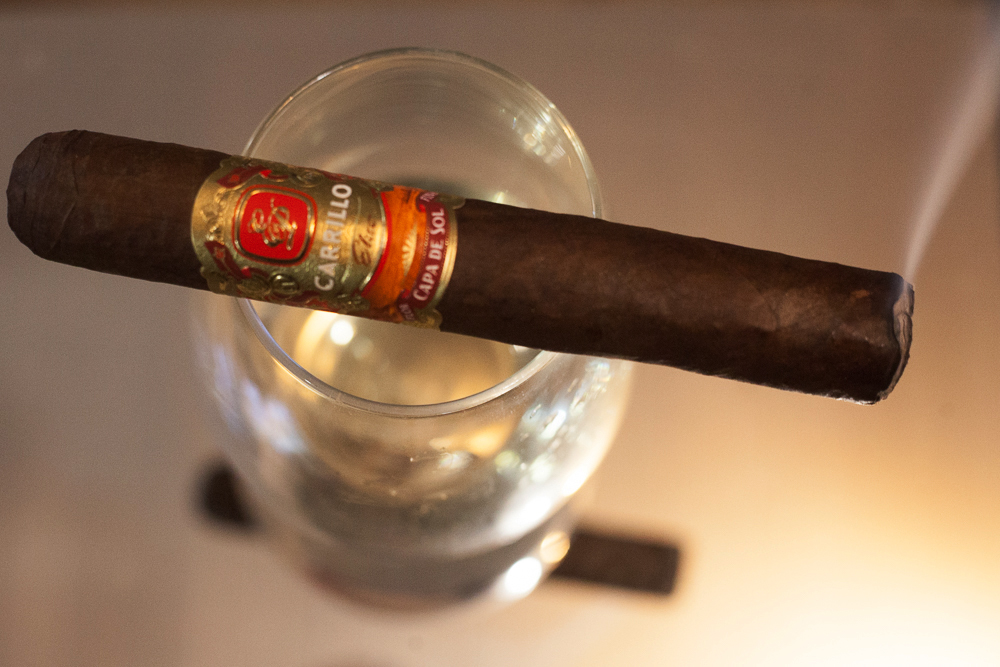
The E.P. Carrillo Capa de Sol Sultan Cigar First Puff and Flavour
It is not a tight rolled cigar. The puff and draw are light and wispy, with loads of smoke forming from the sun-grown wrapper.
Each puff has mild coffee and cocoa tastes with a bit of spice. The E.P. Carrillo Capa del Sol Sultan started with natural tobacco notes and some black pepper.
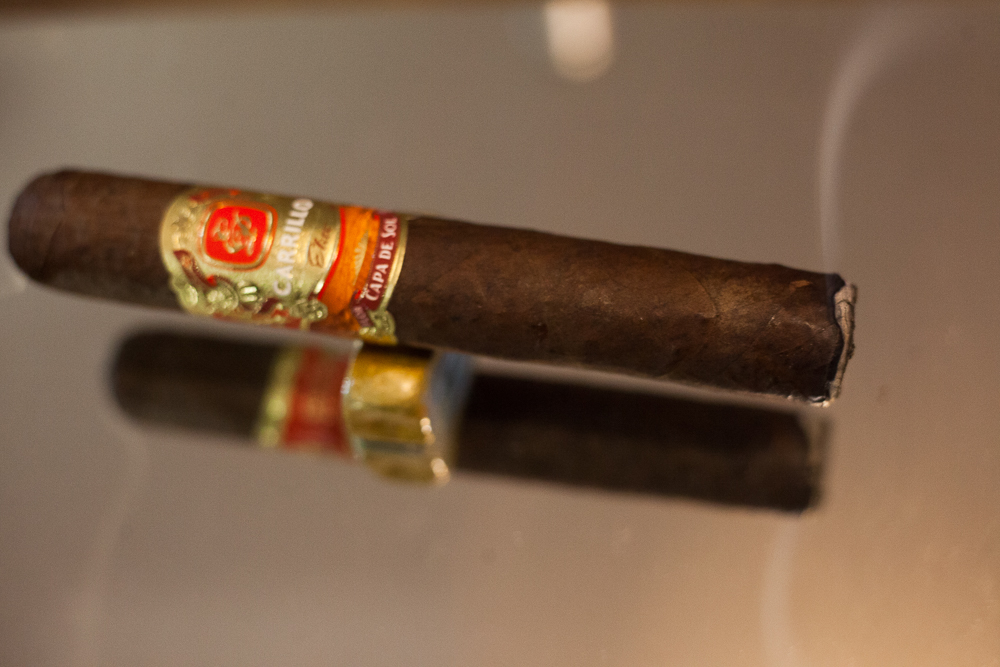
The E.P. Carrillo Capa de Sol Sultan Cigar Burn aroma and Draw.
The cigar has the aromas of hot chocolate and toasted nuts. I found the burn wavey at times, but nothing serious.
The burn rate is consistent and slow depending on how hot you smoke the cigar. The draw to the E.P. Carrillo Capa de Sol Sultan is impressive.
The E.P. Carrillo Capa de Sol Sultan Cigar Strength and Body
From a strength and body perspective, I found the E.P. Carrillo Capa de Sol Sultan to be a medium to full strength. And medium to full-bodied. The cigar is consistent from start to finish.
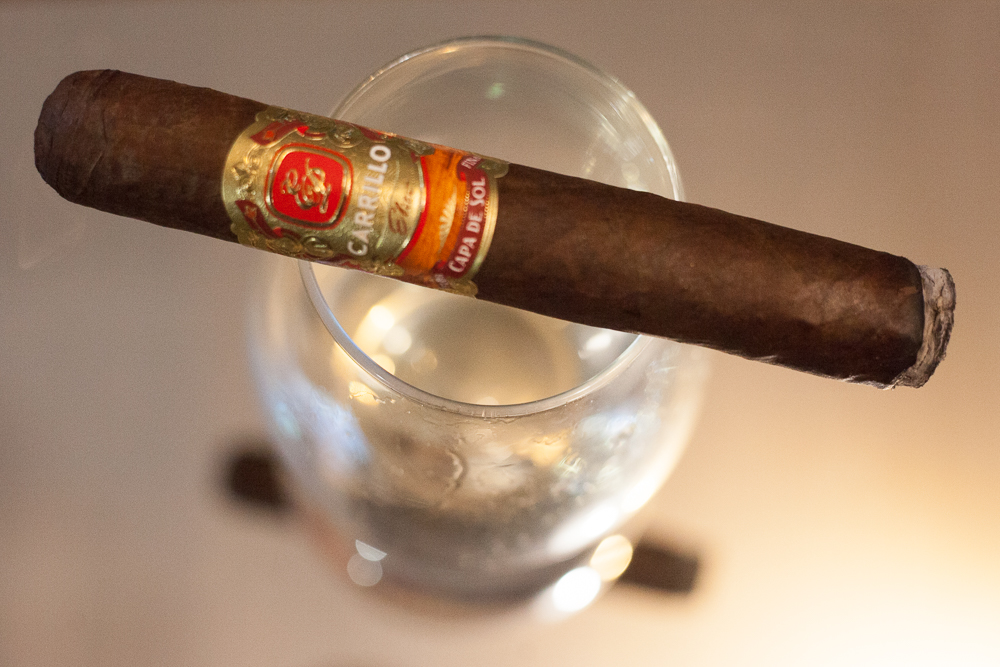
The E.P. Carrillo Capa de Sol Sultan Cigar Final Thoughts
Summary
Essential Flavors
Aged Tobacco, Coffee, Cocoa, Smokey Barnyard, Light sweetness, Earthy, Black Pepper spice
Burn Good
Draw Excellent
Complexity Medium
Body Medium to Full
Strength Medium to Full
Finish Smooth
The wine and cigar are smooth companions. The salty hints blended with lingering sweetness in the wine pair perfect with the hot chocolate and mild hot caramel taste in the cigar.
If you enjoy lighting up a bigger ring gauge cigar, the E.P. Carrillo Capa de Sol Sultan is for you.
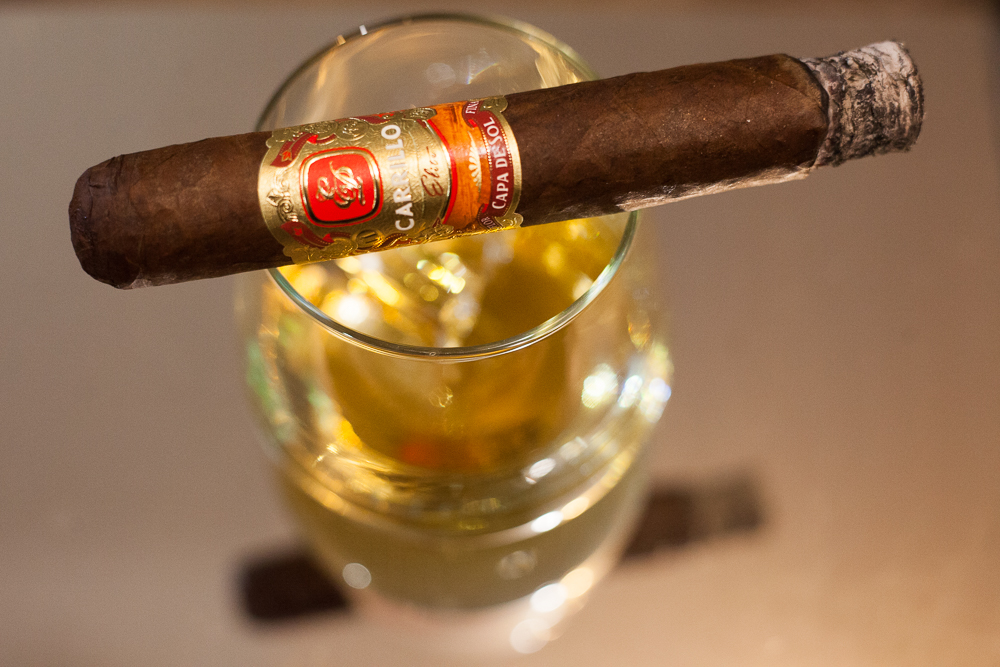
A sip of Maker's Mark Bourbon.
The Bourbon enhanced the cigars cocoa and spice flavours.
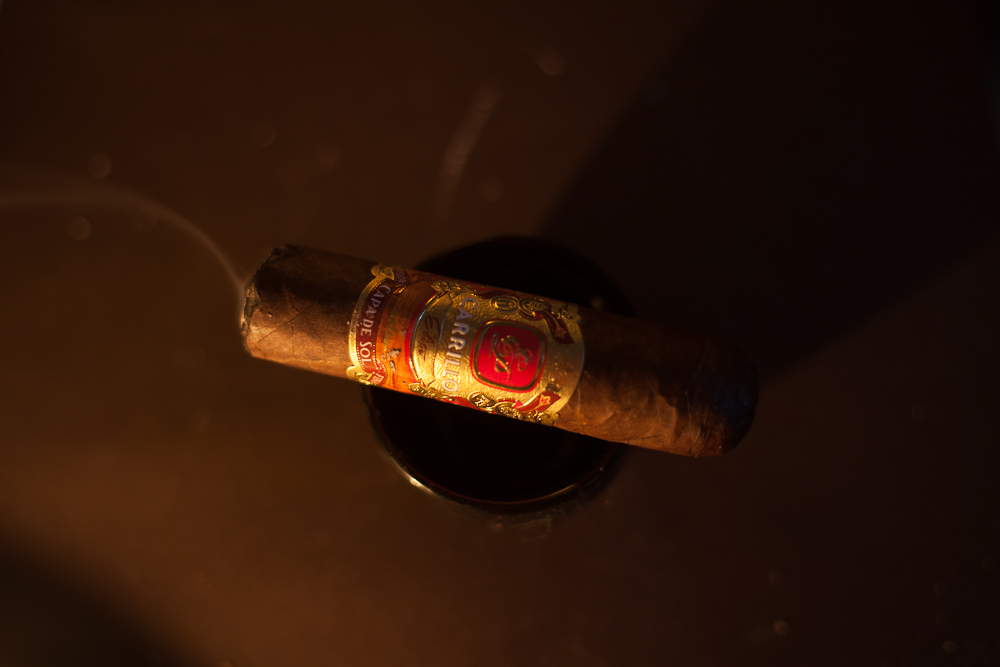
Jorge Maique and Ernesto-Perez Carillo
Jorge Maique, former Vice President of Habanos S.A. recently joined Ernesto-Perez Carillo at Tabacalera La Alianza in the Dominican.
Jorge takes responsibility for operations and commerce at the company. He respects Ernesto as one of the few master blenders.
The production in the Dominican is double the Cuban output. The Dominican factory produces 160 million compared to Cuba's 80 million cigars. A great roller makes up to 400 cigars daily in the Dominican compared to only a max of 120 in Cuba.
Jorge Maique smokes EPC's daily in the following order. He lights an EPC Encore in the morning, a La Historia after lunch and then settles in to smoke a Pledge after dinner.
To stock up your humidor with the Elite Ernesto-Perez Carillo, E.P. Carrillo Capa de Sol cigar,
Click the link below.
EPC Capa de Sol - Sultan Cigar


